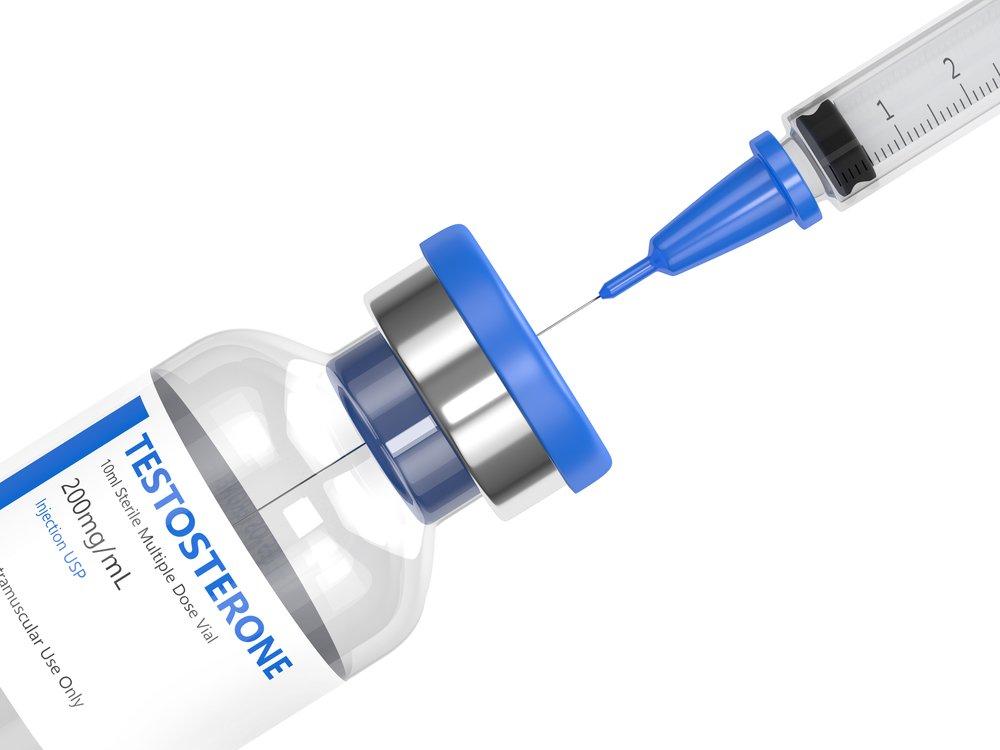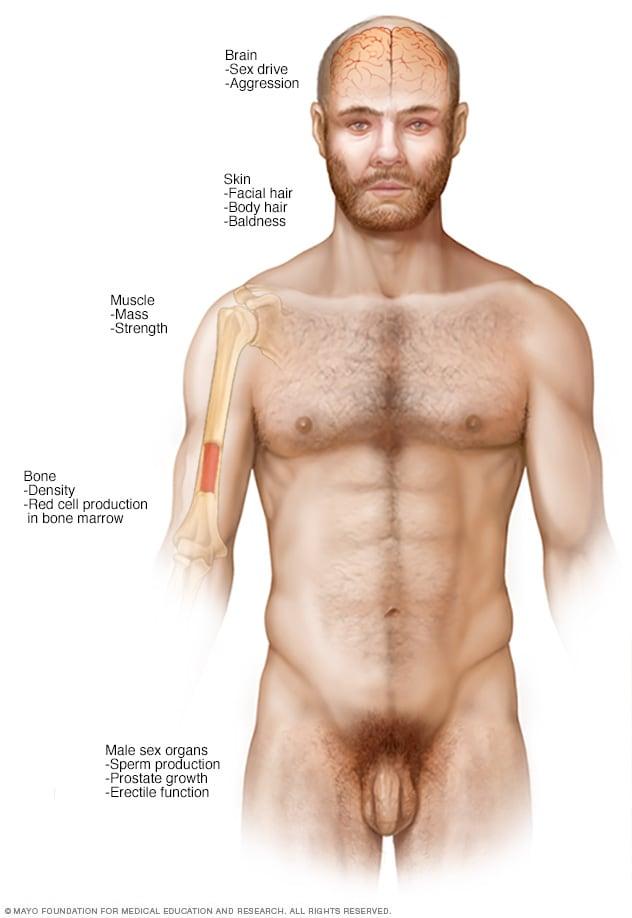In a world increasingly captivated by the pursuit of optimal health and fitness, the intersection of hormones and body composition is sparking fresh conversations and debates. Among the myriad approaches to weight management, testosterone therapy has emerged as a focal point for those seeking to shed excess fat and enhance their physical vitality. While traditionally associated with muscle growth and energy levels, the potential role of testosterone in fat loss is gaining recognition, inviting both intrigue and skepticism. This article delves into the science behind testosterone therapy, exploring how it may influence fat metabolism, the factors that intertwine hormone levels with weight management, and the implications for those who consider this pathway. Join us as we navigate the intricate landscape of hormone therapy, unraveling the facts, benefits, and considerations surrounding testosterone’s impact on fat loss.
Understanding Testosterone Therapy and Its Role in Fat Metabolism
Testosterone therapy has emerged as a significant intervention for individuals seeking to optimize their body composition, primarily through its influence on fat metabolism. By increasing testosterone levels, the body often experiences enhanced lean muscle mass, which plays a crucial role in burning calories more efficiently. This hormonal shift encourages the development of muscle tissue, which is metabolically active and requires more energy to maintain than fat tissue. As a result, individuals on testosterone therapy may notice a reduction in body fat percentage, leading to a more toned physique.
In addition, testosterone has been linked to a variety of metabolic processes that directly impact how the body handles fat stores. Some key effects include:
- Enhanced lipolysis: The breakdown of fat cells for energy is more efficient, especially when combined with exercise.
- Increased insulin sensitivity: A favorable environment for fat storage is reduced, promoting the burning of fat instead.
- Improved energy levels: Higher testosterone levels can result in greater motivation to engage in physical activity, further aiding fat loss.
These factors combine to create a synergistic effect that can help individuals achieve their fat loss goals more effectively under the guidance of a healthcare professional.

The Science Behind Testosterone and Body Composition Changes
The influence of testosterone on body composition is both profound and multifaceted. As a pivotal hormone, its levels can directly impact muscle synthesis, fat distribution, and overall metabolic rate. Individuals with higher testosterone levels often experience an increase in lean muscle mass while simultaneously reducing body fat. This dual mechanism is primarily due to testosterone’s ability to improve protein synthesis and enhance the body’s response to insulin, a hormone that plays a critical role in metabolism. Additionally, testosterone therapy has been observed to activate pathways that promote lipolysis, the breakdown of fat cells, further facilitating fat loss.
Studies have shown that testosterone therapy can lead to significant changes in body composition, particularly in men suffering from low testosterone levels. These changes can include:
- Enhanced muscle strength: Increased testosterone levels contribute to greater muscle mass and improved physical performance.
- Reduced visceral fat: Higher testosterone can help decrease the accumulation of fat around the organs, which is linked to various health risks.
- Improved metabolic function: Testosterone aids in optimizing metabolic processes, leading to a more effective fat-burning capacity.
| Effect of Testosterone Therapy | Short-Term Benefits | Long-Term Changes |
|---|---|---|
| Increased Muscle Mass | Rapid strength gains | Sustained muscle retention |
| Fat Loss | Initial decrease in body fat | Long-term fat management |
| Metabolic Improvement | Enhanced energy levels | Better overall health |

Evaluating the Benefits of Testosterone Therapy for Weight Loss
Testosterone therapy has garnered attention as a potential strategy for aiding weight loss, particularly in individuals experiencing low testosterone levels. This therapy has shown promise in improving metabolic rate, which can lead to increased calorie expenditure. Furthermore, testosterone is known to support the development of lean muscle mass, which in turn elevates metabolism since muscle tissue burns more calories at rest compared to fat tissue. As the body composition shifts towards a higher ratio of muscle, individuals may find it easier to shed excess pounds.
The benefits of testosterone therapy extend beyond just muscle gain and fat loss; there are additional factors that contribute to its effectiveness in weight management. Some of these benefits include:
- Enhanced energy levels: Improved energy can lead to greater physical activity, facilitating weight loss.
- Improved mood and motivation: Emotional well-being is linked to better adherence to diet and exercise plans.
- Reduced fat storage: Testosterone modulates fat distribution, potentially decreasing visceral fat accumulation.
| Key Benefits | Impact on Weight Loss |
|---|---|
| Increased Muscle Mass | Boosts metabolism and calorie burn |
| Higher Energy Levels | Encourages more physical activity |
| Enhanced Mood | Improves compliance with diet plans |
| Reduced Belly Fat | Decreases health risks associated with obesity |

Potential Risks and Considerations: What You Need to Know
While testosterone therapy may present potential benefits for fat loss, it is essential to consider the associated risks and implications carefully. Possible side effects include:
- Hormonal imbalance: Altering testosterone levels can disrupt the natural hormonal balance, which may lead to complications.
- Cardiovascular impact: Some studies link testosterone therapy to an increased risk of heart disease and stroke.
- Liver toxicity: Unmonitored use can lead to liver issues, prompting the need for regular blood tests.
- Emotional changes: Fluctuations in hormone levels can result in mood swings, aggression, or anxiety.
It is also vital to recognize that testosterone therapy should not be viewed as a standalone solution for fat loss. Several considerations come into play:
- Individual variability: Responses to therapy can vary greatly among individuals, making personalization crucial.
- Comprehensive approach: A holistic plan, including diet and exercise, is essential for lasting fat loss.
- Professional guidance: Always seek consultations with healthcare providers before starting therapy to ensure safety and efficacy.
| Consideration | Description |
|---|---|
| Consultation | Engaging with a healthcare professional for tailored advice. |
| Monitoring | Regular health check-ups to track testosterone levels and overall health. |
| Lifestyle Changes | Integrating fitness and nutrition as part of a comprehensive fat-loss strategy. |
Integrating Testosterone Therapy with Nutrition and Exercise
When embarking on a journey of fat loss through testosterone therapy, the synergy of nutrition and exercise cannot be overstated. By focusing on nourishing your body with whole foods, you can optimize hormone levels and promote overall health. Incorporating a balanced diet that includes:
- Lean Proteins: Chicken, fish, legumes, and tofu help to build muscle mass.
- Healthy Fats: Avocados, nuts, and olive oil support hormone production.
- Complex Carbohydrates: Whole grains, fruits, and vegetables provide the energy needed for workouts.
Complementary to a rich nutritional plan, a well-structured exercise regimen plays a critical role in maximizing the effects of testosterone therapy. Focusing on both strength training and cardiovascular exercise can enhance fat loss and improve muscle tone. Consider a routine that includes:
- Weight Lifting: Aim for 3-4 sessions a week to stimulate muscle growth.
- High-Intensity Interval Training (HIIT): Incorporate this 2-3 times a week for optimal fat burning.
- Active Recovery: Engage in activities like walking or yoga to keep mobility high and stress low.
Monitoring Progress: How to Track Changes Effectively
To effectively gauge the impact of testosterone therapy on fat loss, implementing a structured monitoring system is essential. Start by establishing a baseline measurement to track changes accurately. This could include your weight, body measurements (such as waist and hips), and body fat percentage. Consider maintaining a weekly log that not only captures these metrics but also includes lifestyle factors such as dietary habits and physical activity. Utilizing a graphical representation can help visualize your progress, making it easier to identify trends over time.
In addition to physical measurements, keeping a symptom diary can provide insights into changes you may experience during therapy. This might include energy levels, mood fluctuations, or changes in appetite. Take note of these factors, as they are crucial for understanding the overall effectiveness of the treatment. Here’s a simple table to summarize your weekly observations:
| Week | Weight (lbs) | Body Fat (%) | Energy Level (1-10) | Notes |
|---|---|---|---|---|
| 1 | 180 | 25 | 6 | Initial feeling of energy increase |
| 2 | 178 | 24.5 | 7 | Improved workout stamina |
| 3 | 177 | 24 | 8 | Noticed less fat around abdomen |
Making Informed Decisions: Consulting Healthcare Professionals for Optimal Results
When considering testosterone therapy for fat loss, it’s vital to engage with qualified healthcare professionals who can guide you through the myriad of options available. These experts can provide personalized insights based on your unique health profile, including factors like age, current hormone levels, and lifestyle choices. Consulting a specialist ensures that any decision made will align with your overall health goals and mitigate potential risks. Common areas of focus during these consultations include:
- Hormone Assessment: Understanding your baseline testosterone levels.
- Comprehensive Health Evaluation: Identifying any underlying conditions that may affect therapy.
- Customized Treatment Plans: Developing a regimen tailored to your specific needs.
- Monitoring and Adjustments: Regular follow-ups to track progress and make necessary changes.
It’s also essential to understand the different methods of administration available for testosterone therapy, which can vary in effectiveness and suitability. Healthcare professionals can explain these options thoroughly, ensuring you make an informed choice. Some common delivery methods include:
| Method | Description |
|---|---|
| Injections | Administered directly into the muscle for quick absorption. |
| Patches | Applied to the skin for steady hormone release. |
| Gels | Applied topically for convenient daily use. |
| Pellets | Implanted under the skin for long-term hormone delivery. |
Making informed decisions regarding testosterone therapy, especially for fat loss, significantly improves the likelihood of achieving optimal results. Continuous engagement with healthcare professionals is key to navigating through potential side effects and ensuring that the chosen therapy aligns with personal wellness objectives.
Q&A
Q&A: Understanding Testosterone Therapy for Fat Loss
Q1: What is testosterone therapy, and how does it relate to fat loss?
A: Testosterone therapy involves the administration of testosterone, a hormone primarily produced in the testicles in men and the ovaries in women, to address low testosterone levels. The therapy is believed to aid in fat loss by increasing lean muscle mass, boosting metabolism, and enhancing energy levels, all of which can contribute to more effective weight management.
Q2: Who might benefit from testosterone therapy for fat loss?
A: Individuals suffering from hypogonadism, a condition characterized by low testosterone levels, may particularly benefit from this therapy. Moreover, men over 30, as well as some postmenopausal women, who may experience age-related testosterone decline, could find testosterone therapy helpful in their weight loss journey, especially when combined with a healthy diet and exercise.
Q3: Are there any risks associated with testosterone therapy?
A: Like any medical treatment, testosterone therapy carries potential risks and side effects. These can include increased risk of cardiovascular issues, sleep apnea, acne, and mood swings, among others. It’s essential to consult with a healthcare provider to evaluate the risks versus benefits, particularly considering individual health circumstances.
Q4: Is testosterone therapy a magic bullet for fat loss?
A: Not at all! While testosterone therapy can assist in fat loss, it is not a substitute for a balanced diet and regular exercise. Think of it as a tool rather than a magic solution. For optimal results, it should be part of a holistic approach to weight management that includes healthy lifestyle choices.
Q5: How is testosterone therapy administered?
A: Testosterone therapy can be delivered through various methods, including injections, transdermal patches, gels, and pellets inserted under the skin. The choice of administration depends on personal preference, medical history, and guidance from a healthcare provider.
Q6: How quickly can one expect to see results from testosterone therapy?
A: Results can vary widely among individuals. Some may notice improvements in energy and mood within a few weeks, while significant changes in body composition, like fat loss, could take several months to manifest. Regular monitoring by a healthcare provider is essential to evaluate the therapy’s effectiveness and adjust as necessary.
Q7: Can anyone undergo testosterone therapy?
A: Not everyone is a suitable candidate for testosterone therapy. It is crucial to undergo comprehensive testing and evaluation by a healthcare professional. Those with certain health conditions, such as prostate cancer or severe heart issues, may be advised against it.
Q8: What role does lifestyle play when undergoing testosterone therapy?
A: Lifestyle factors such as diet, physical activity, sleep quality, and stress management play a critical role in maximizing the benefits of testosterone therapy. A well-rounded approach that includes these elements will support fat loss more effectively than therapy alone.
Q9: How can someone interested in testosterone therapy get started?
A: The first step is to consult with a qualified healthcare provider who specializes in hormone therapy. They can evaluate your symptoms, conduct necessary tests, and determine if testosterone therapy is appropriate for you, creating a tailored plan that aligns with your health goals.
Q10: Is there anything else to consider before starting testosterone therapy for fat loss?
A: Yes, it’s important to have realistic expectations and understand that therapy is just one aspect of a comprehensive weight management plan. Keeping an open dialogue with your healthcare provider and focusing on sustainable lifestyle changes will yield the best outcomes.
The Way Forward
while testosterone therapy presents a compelling avenue for those seeking fat loss, it is essential to approach it with caution and informed consideration. As with any medical intervention, individual circumstances, goals, and health profiles play a pivotal role in determining its suitability. Engaging in an open dialogue with healthcare professionals alongside an evaluation of lifestyle factors such as diet and exercise is crucial. Ultimately, the quest for fat loss is a multifaceted journey that extends beyond hormone levels, encompassing a holistic approach to wellness. Whether testosterone therapy becomes a part of your strategy or not, the key lies in finding a balanced path that fosters both physical health and mental well-being. As you navigate through the myriad options available, remember that sustainable change is rooted in knowledge, patience, and perseverance.










